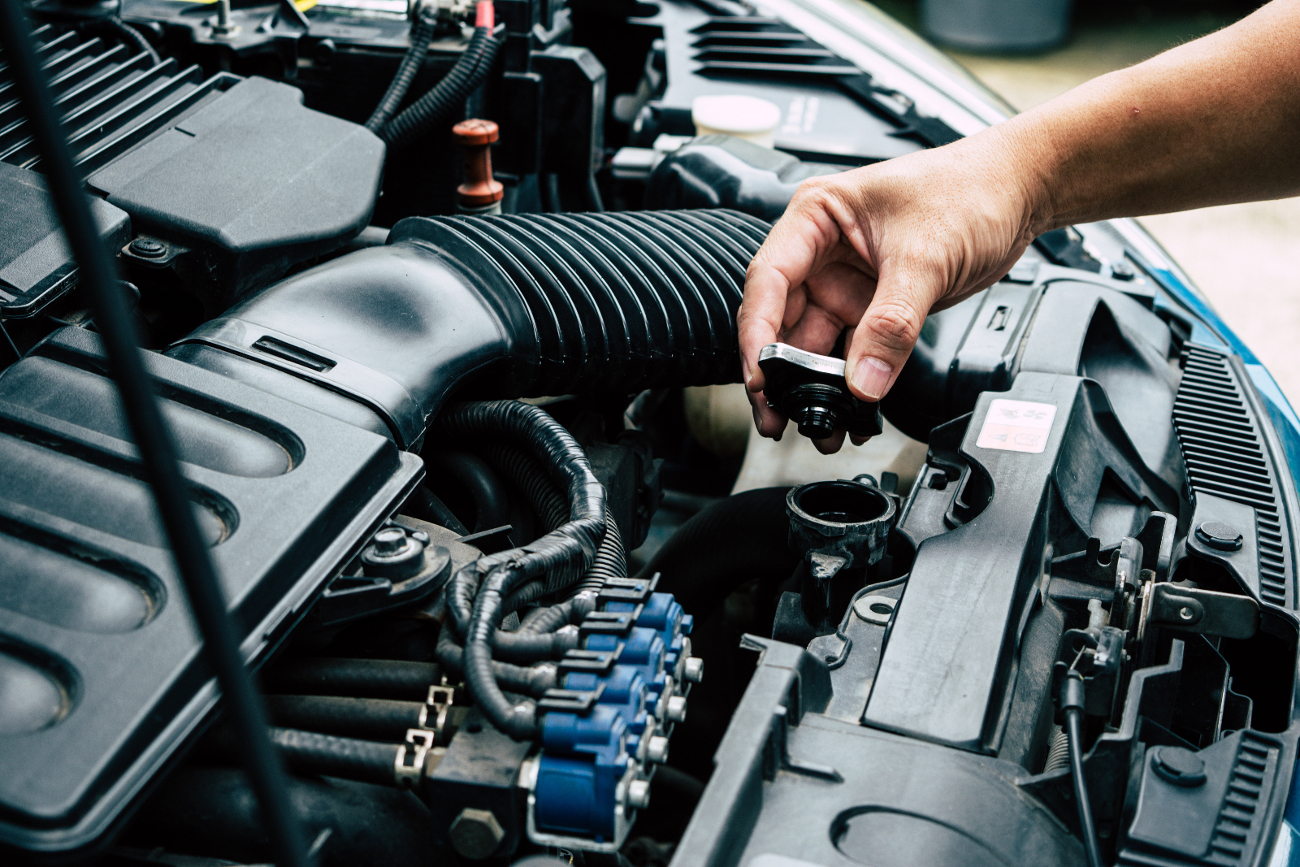
A mixture of fuel and air combine in a chamber, then an electrical spark is released. A small, contained explosion takes place, set off by and then continuing a chain of events; Intake, compression, combustion, exhaust. Your vehicle’s engine is now running. This process generates a lot of heat through combustion as well as the friction from now moving parts, much more than your vehicle’s components could withstand on their own. Temperatures need to be regulated and excess heat needs to go somewhere in order for the continued operation of your automobile, this is where your engine’s cooling system comes in.
Components of Your Cooling System
Your engine’s cooling system is made up of many moving parts, some of which are;
- The water pump
- Thermostat
- Cooling fans
- Coolant overflow tank
- Pressure Cap
- Hoses
- Heater core
All of these parts have specific functions that work together to keep your engine’s temperature at operational levels.
Cooling System At Work
It all begins when exhaust and oil have done all they can, the thermostat detects excess heat from the engine and begins a cycle where the cool liquid is released into the engine to absorb heat before returning to be re-cooled then re-released. During this process excess heat is cast off by fans. All of this cooling and releasing is done through the component of your engine’s cooling system known as the radiator.
The Radiator
Your radiator itself is made up of several main components;
- Core
- Pressure cap
- Inlet and outlet tanks
Core
The core(s) is the largest part of the radiator that provides its primary function. This is where heated liquid gives off hot air and is re-cooled before continuing the cycle. It uses a large metal section with small fins to get rid of hot air from around the radiator.
Pressure Cap
Your cooling system has to remain pressurized, if not the coolant inside your radiator could boil. It is important that your coolant can maintain heating without boiling, this keeps your engine running smoothly and helps to avoid overheating.
Inlet and Outlet Tanks
Coolant moves in and out of tanks through hoses. These tanks are known as your inlet and outlet tanks. Inlet tanks are responsible for taking in hot liquid from the engine, once it is cooled by the radiator it is released back into the engine through the outlet tank.
Coolant
If the radiator is thought of as a heart, then coolant is the blood. It is your vehicle’s vitality. Without proper coolant, there is no way for the transfer of heat from the engine to happen. Using old, too little, or even the wrong type of coolant can lead to corrosion and early wear. Deposits can also begin to plug up hoses important for the transfer of liquid. Coolant is responsible for transferring heat and additives to prevent freezing. On top of this, coolant is also responsible for the lubrication of different points of contact.
Be sure to watch for signs of low coolant such as;
- A rising temperature gauge
- A sweet smell from under the hood
- Poor fuel economy
- Your heater isn’t functioning properly
- Your engine shuts off unexpectedly
- Rusted bits in your coolant liquid
Now that you know the components of a radiator and how they work, be sure to pay close attention to the warning signs of mechanical failure. Not addressing them early on could lead to irreversible damage and hefty repair costs. Other signs to stay mindful of are;
- Grinding noises from under the hood
- Smoke from the engine
- Sludgy or dark-colored coolant – coolant should be less thick and a yellowish-green hue
- And always check your dashboard for warning lights
Related Posts
Key Takeaways On average, passenger vehicle tires last 40,000 to 60,000 miles, depending on type, driving habits, and maintenance. Replace tires when tread depth reaches 2/32”, if damaged, or older than 10 years. Regular rotation, alignment, and proper inflation extend tire life. Aggressive driving, poor roads, and harsh weather shorten tire lifespan. Take advantage [...]
When you think about car maintenance, you probably focus on oil changes, tire rotations, and maybe even brake pad replacement. But what about your brake fluid? If you’ve ever wondered, “What does brake fluid do?” or “Why is brake fluid important?”, you’re not alone. Brake fluid might not be the most talked-about part of [...]
Is that high-pitched squeal from your brakes driving you—and everyone else—crazy? Don’t ignore it. Squeaky brakes aren’t just annoying, they’re your car’s way of saying something needs attention. Whether you're cruising through Salt Lake City or winding up Idaho’s mountain passes, here’s what’s likely going on, how you can fix it, and when it [...]





